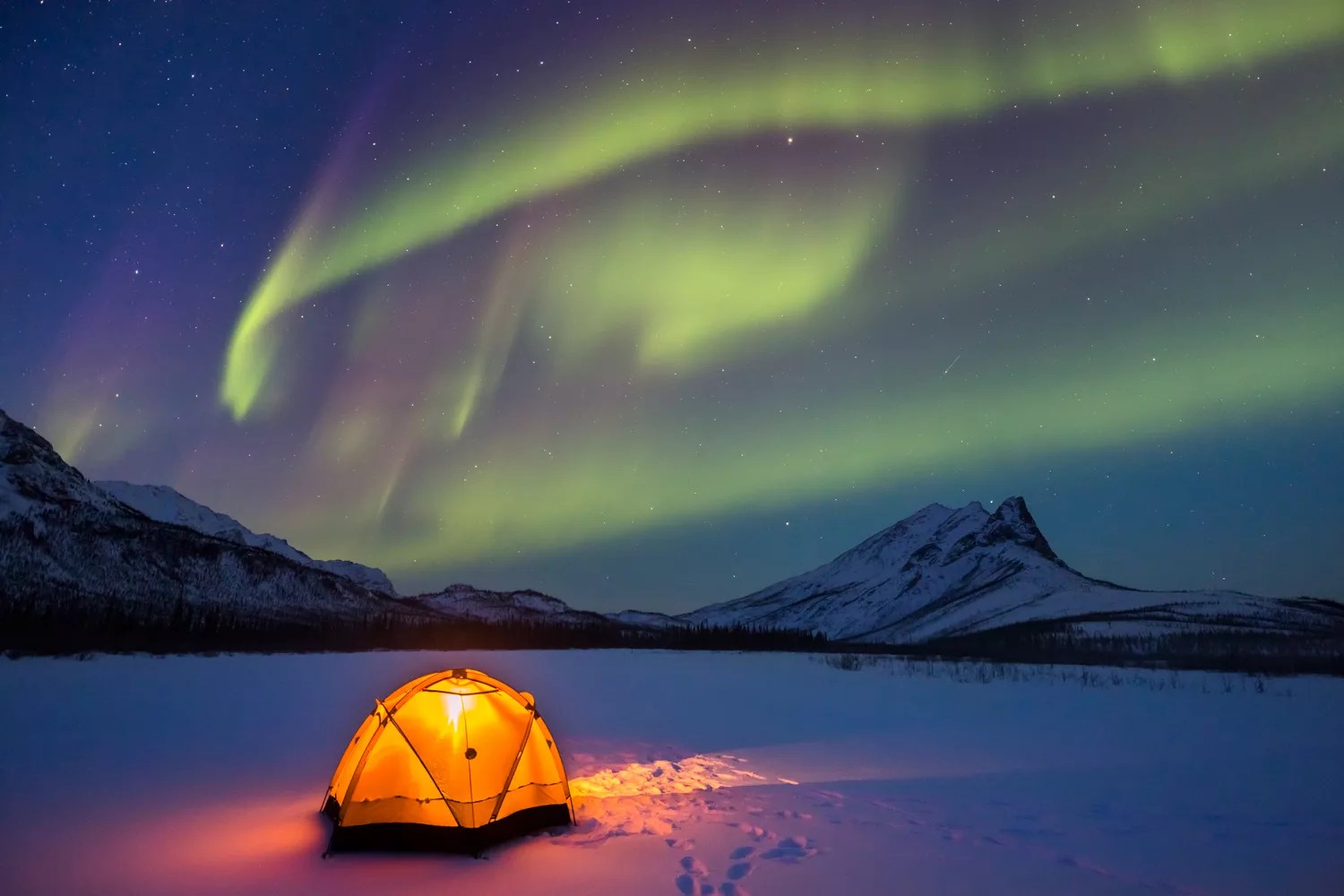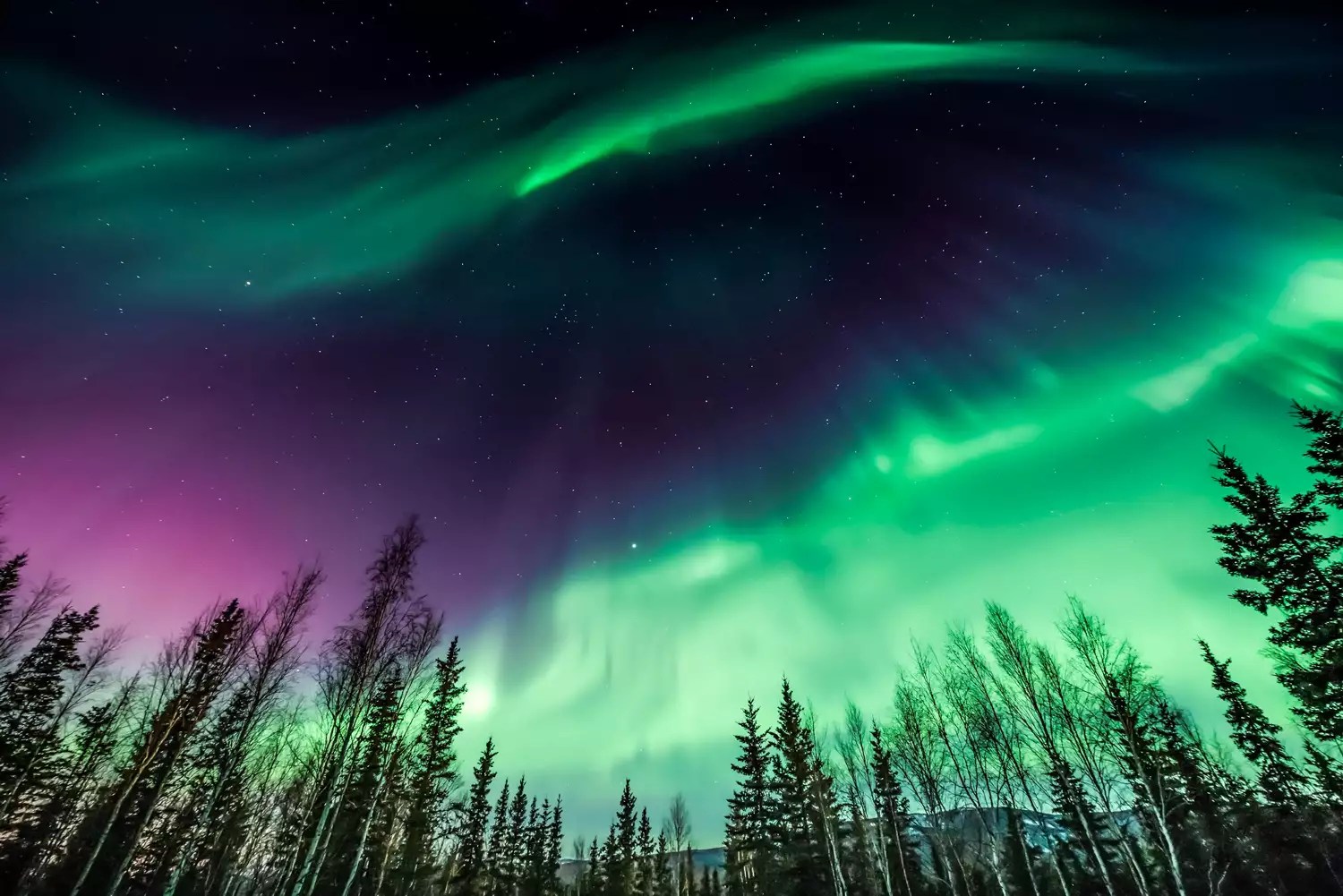Photo:Elizabeth Ruggiero/Getty

Elizabeth Ruggiero/Getty
July’s night sky is about to get colorful — and this time, it’s not because of fireworks!
Taking place the week of July 10, several cities across the United States could have the chance to view the northern lights, a rare luminous glow seen around the magnetic poles of the northern and southern hemispheres.
Like most space spectacles, the viewing of the northern lights is contingent upon the weather the night of the event. While the best conditions to view the colorful display include clear and dark skies, it’s important for skywatchers to point their eyes upwards from a location free of light pollution.
The aurora is a fascinating event for all, having captivated scientists since prehistoric times. According toNASA, “Spectacular auroral eruptions have given rise to mythological creatures, have driven folklore and have influenced the course of history, religion, and art.”
The oldest known auroral citing was penned in 2600 B.C. in China, while Italian astronomer Galileo Galilei coined the name “aurora borealis” after Aurora (the Roman goddess of morning) in 1619 A.D. Norwegian physicist Kristian Birkeland, though, is best known for explaining aurora theories in 1902.
Read on for everything to know about the northern lights, including when and how to spot them in the United States.
What are the northern lights?
Getty Images

Auroras are captivating displays of light in the night sky that are often viewable from Earth in both the northern and southern hemispheres. Depending on our planet’s atmosphere, the auroras can appear green, red, purple or pink in color.
If skywatchers are near the North Pole, the spectacle is called the aurora borealis (or northern lights) — and if they’re near the South Pole, it is called the aurora australis (or the southern lights). Regardless of location, the atmospheric phenomenon occurs because of the sun.
What causes the northern lights?

According to theNational Oceanic and Atmospheric Administration, a geomagnetic storm “is a major disturbance of Earth’s magnetosphere that occurs when there is a very efficient exchange of energy from the solar wind into the space environment surrounding Earth.” The storms produce significant changes in the currents, plasmas, and fields in Earth’s magnetosphere.
Plasmas, in particular, is where the solar particles get their aurora-sparking energy that powers the remarkable displays. Only recently, didNASAscientists directly observed how electrons can “surf” a type of plasma wave and gain the energy required to spark aurora in Earth’s atmosphere.
Geomagnetic storms often take place after solar storms (particularly one called a coronal mass ejection), in which some of the energy and small particles from the Suntravel down the magnetic field linesat the north and south poles into Earth’s atmosphere.
As the storm travels toward our planet, the energy and other small particlesinteract with gases in Earth’s atmospherewhich result in colorful displays of light in the sky. Oxygen gives off green and red light, while nitrogen emits hues of blue and purple.
Which states will the northern lights be visible?
Noppawat/Getty Images

While countries like Canada, Iceland and Scandinavia are more likely to view the aurora borealis because of their high northern latitudes, the spectacle is visible from certain states in the U.S. as well. Alaska, for example, isone of the best states to catch a glimpseof the celestial show — specifically in cities such as Fairbanks, Utqiagvik and Coldfoot.
In fact, the University of Alaska Fairbanks Geophysical Institute revealed that the phenomenon could potentially be seen in a rare sighting from more than a dozen states across the U.S. According to theKp-index(or planetary index), will be at a five and six two days during the week of July 11.
Any notch above five on the Kp scale (which caps at nine) is considered a geomagnetic storm, which therefore causes the most intense and vibrant displays of the auroras seen from Earth.
At the time of the University’s early projection, the aurora borealiswas reported to be seenacross parts of Washington, Idaho, Vermont, Wyoming, New Hampshire, Montana, North Dakota, South Dakota, Minnesota, Nebraska, Massachusetts, Maryland, Ohio, Wisconsin, Michigan, New York and Maine.
However, the projection was updated on July 10, indicating that Alaska and sections of several Canadian provinces and territories — like Alberta, Manitoba, Quebec and the Northwest Territories — as well as a few U.S. cities at higher latitudes, are now likely to see the display.
“Recent predictions of auroral activity visible much further south than Alaska have been making the rounds,” Don Hampton, a research associate professor from the institute, toldNBC News.
What time will the northern lights be viewable in the United States?

The University of Alaska’s early projection said that the northern lights would be visible on Wednesday, July 12 and Thursday, July 13 in the aforementioned locations across the U.S.
On July 12, the stormwas predictedto be highly visible “low on the horizon from Seattle, Des Moines [Iowa], Chicago, Cleveland, Boston, and Halifax [Nova Scotia].” At the time, the Kp scale was showing a five.
On July 13, the stormwas predictedto be stronger and visible in Minneapolis (Milwaukee), Michigan (Bay City) and on the horizon in Massachusettes (Salem), Idaho (Boise), Wyoming (Cheyenne), Nebraska (Lincoln), Indiana (Indianapolis) and Maryland (Annapolis). At the time, the Kp scale was showing a six.
How to view the northern lights?
The northern lights are best viewed around new moons when there’s little illumination in the sky. Fortunately,July’s full moonalready peaked and the new moon is approaching on July 17.
Also, clear skies with little cloud coverage are the best conditions to catch a glimpse of the auroras. Furthermore, selecting a viewing location far away from light pollution will enhance the neon colors in contrast to the dark night sky.
source: people.com